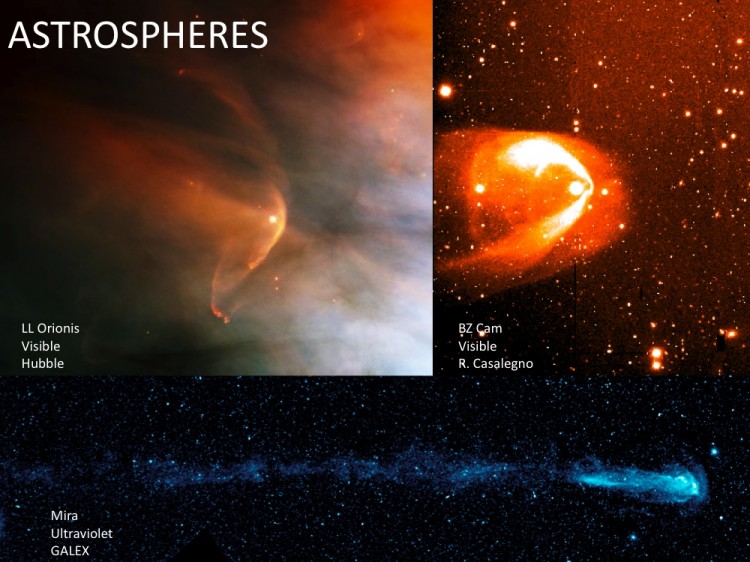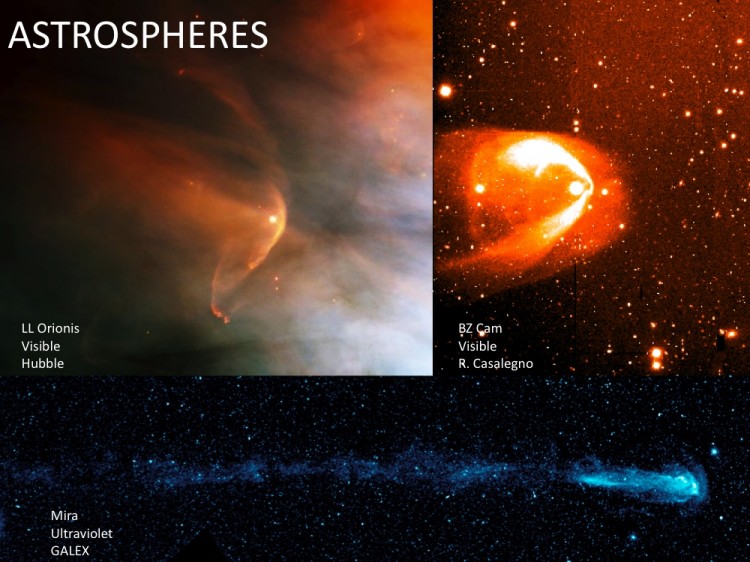

Image Credit: NASA/ESA/JPL-Caltech/Goddard/SwRI
There are several regions that exist around our sun; the heliosphere, termination shock, heliopause, and the bow shock. For a while, scientists thought we had a bow shock, but new data has thrown some doubt into that. Allow me to give you the 30-second refresher tour of these definitions.
- The helioshere is a bubble of charged particles surrounding the solar system.
- The termination shock is the point in the heliosphere where those charged particles slow down to subsonic speeds due to interactions with the interstellar medium.
- The heliosheath is the region of the heliosphere beyond the termination shock where solar wind is slowed, compressed, and made turbulent by interactions with the interstellar medium.
- Lastly, the bow shock, which is best visualized as a sonic boom from a jet (see the bow shocks from other stars pictured here). As the sun rams into the interstellar medium, you would expect to see that shock wave, right? Well, not really.

Image credit: NASA GSFC
The Interstellar Boundary Explorer (IBEX) is a NASA space observatory studying the boundary between our solar system and interstellar space. With data from IBEX and the Voyager spacecrafts, in 2012 scientists had enough data to safely proclaim that our sun doesn’t produce a turbulent shockwave as we hurtle through space. Instead, the sun makes more of a gentle wave as we collide with interstellar space, much in the same way a boat makes a wave as it sails.
Therefore, I’m sorry to inform you that we don’t go flying through space on a supersonic jet. Though, we can take solace in the fact that we sail through space on a rather expensive yacht.